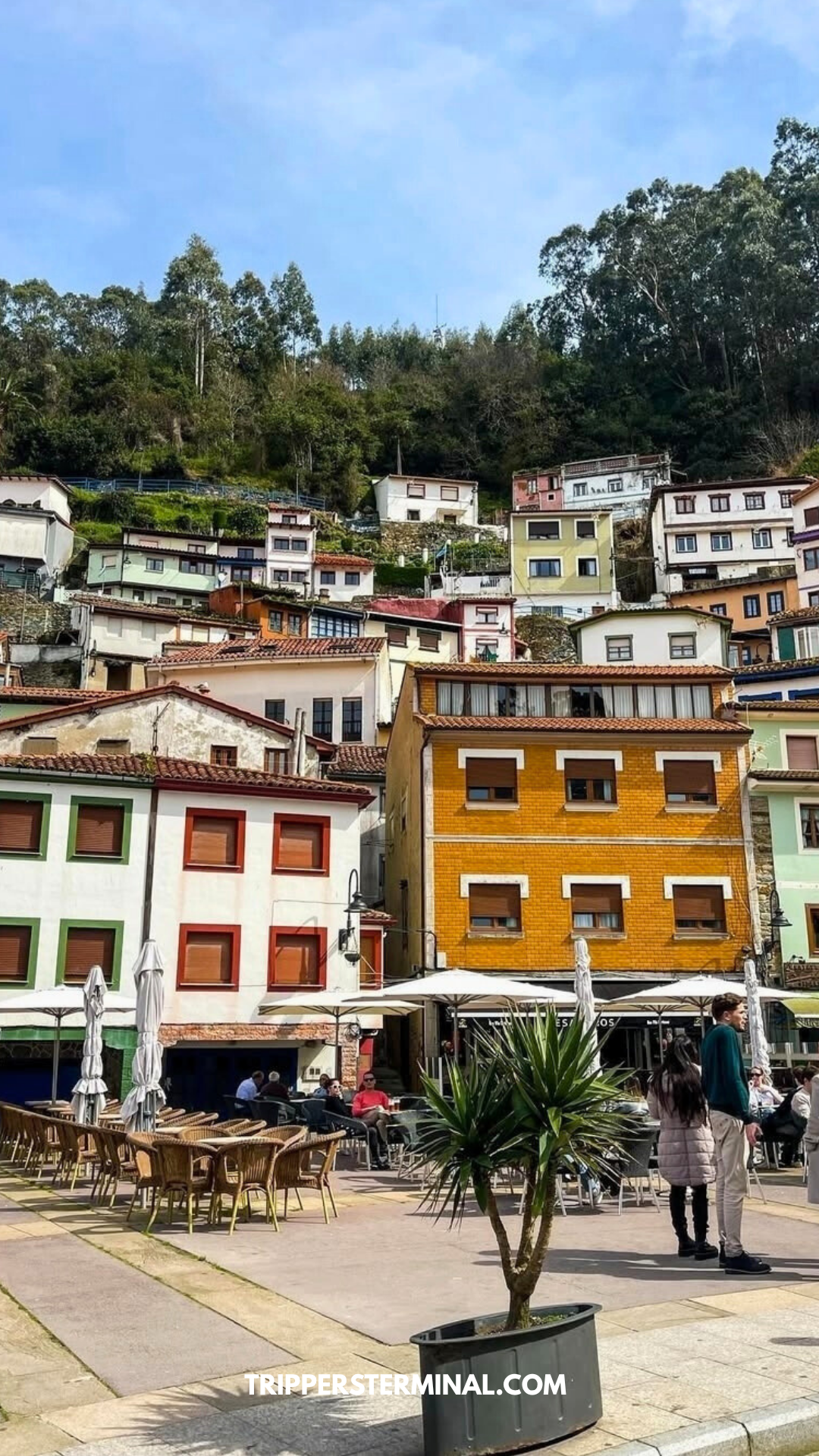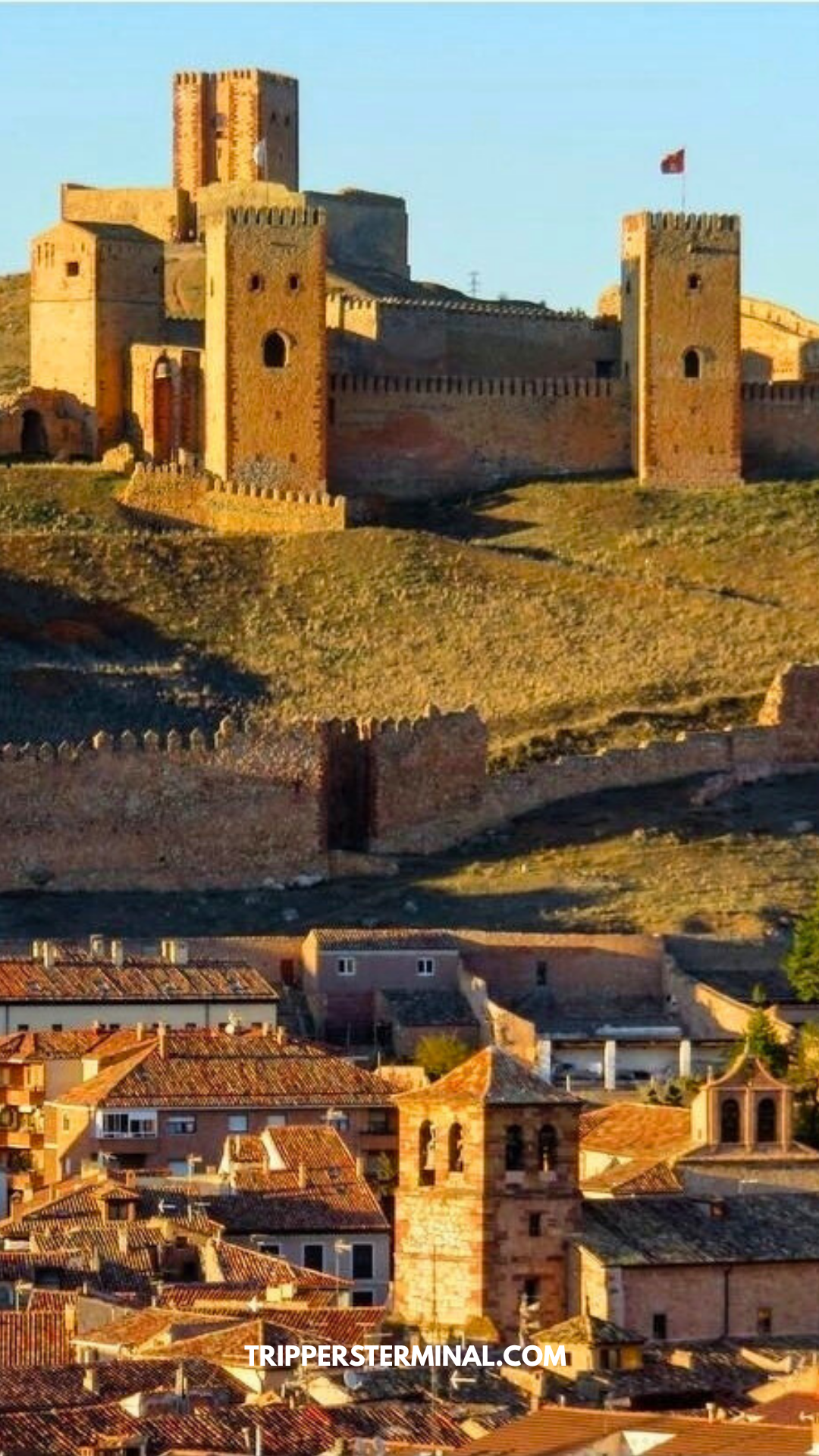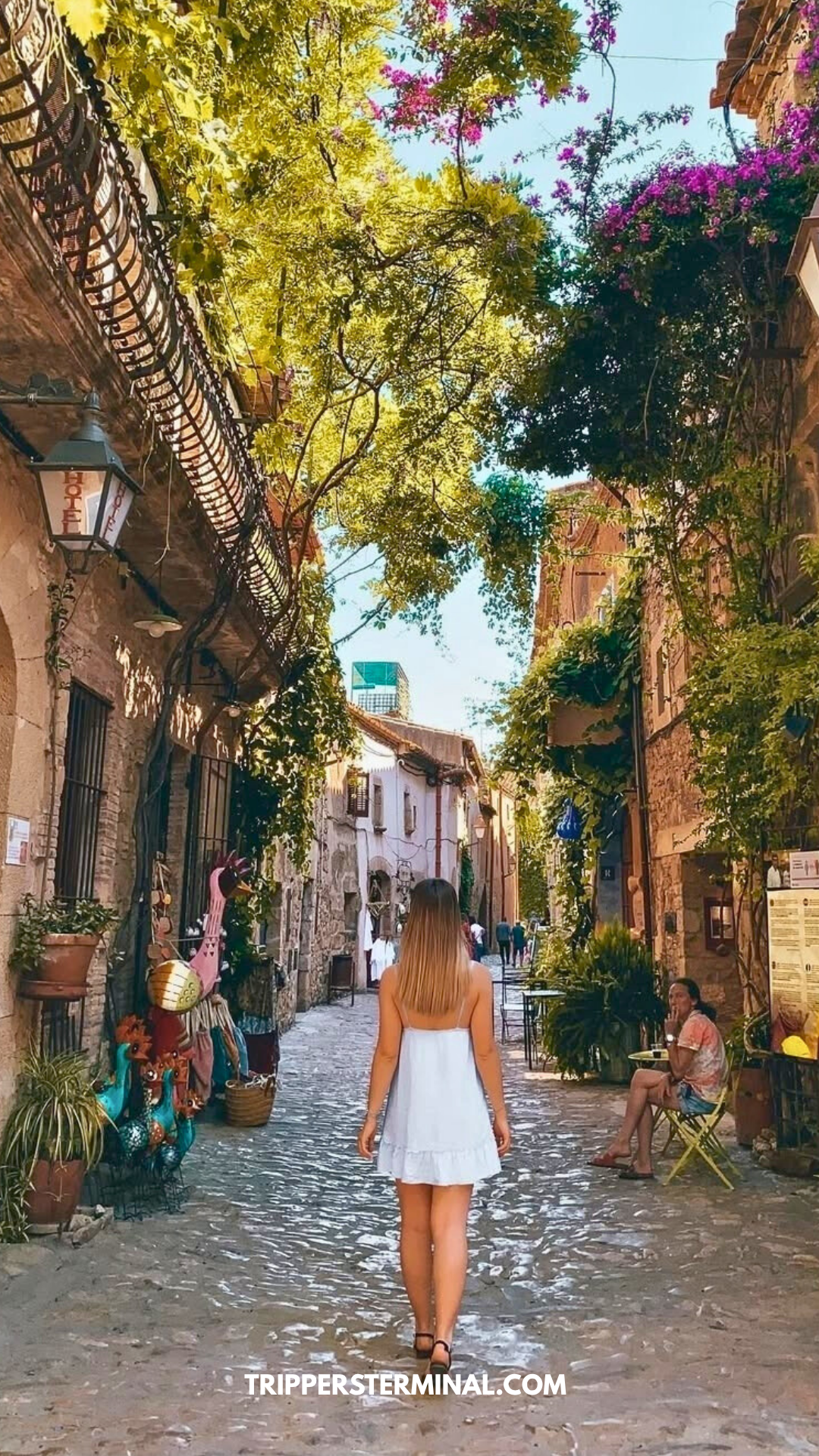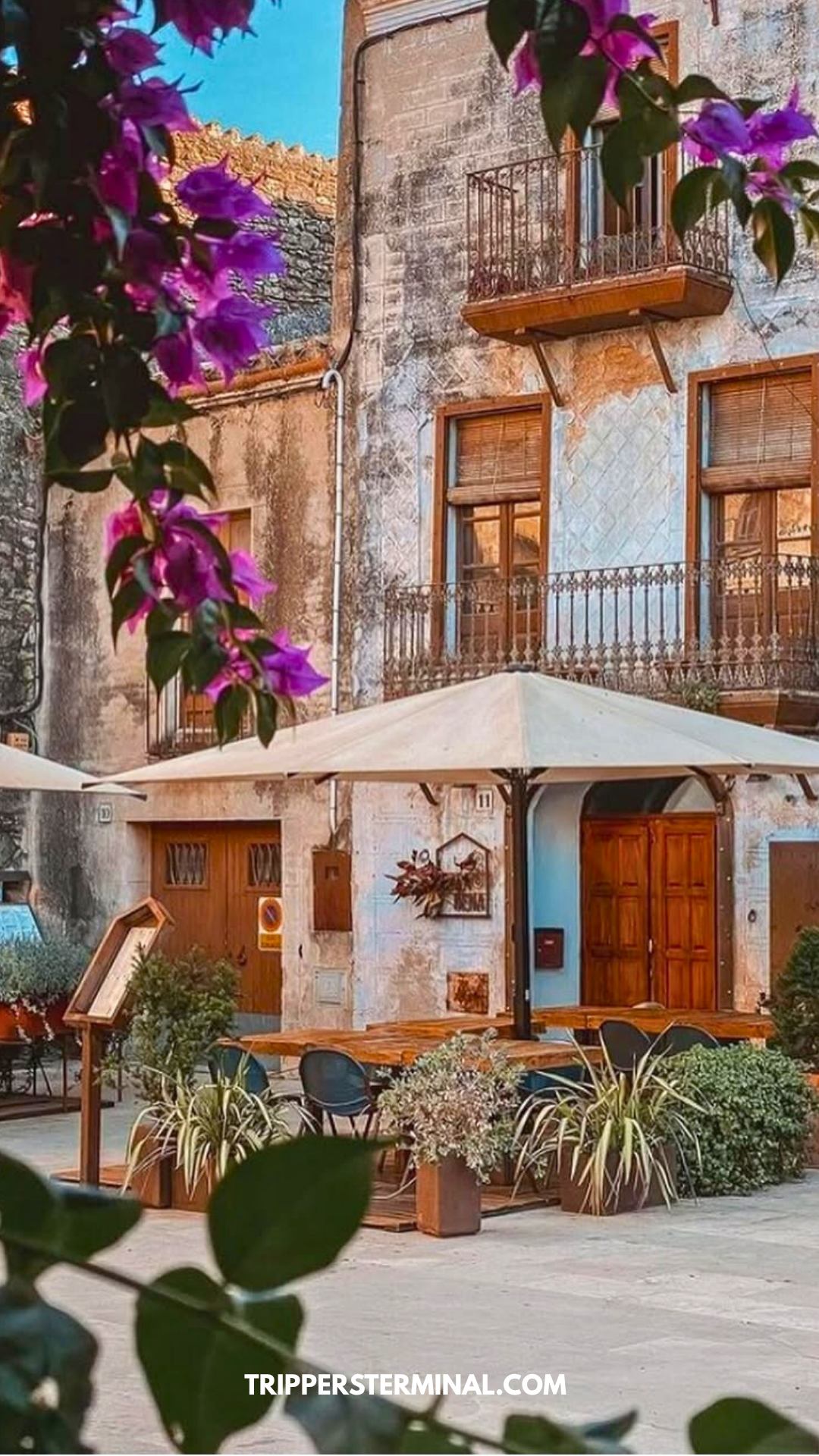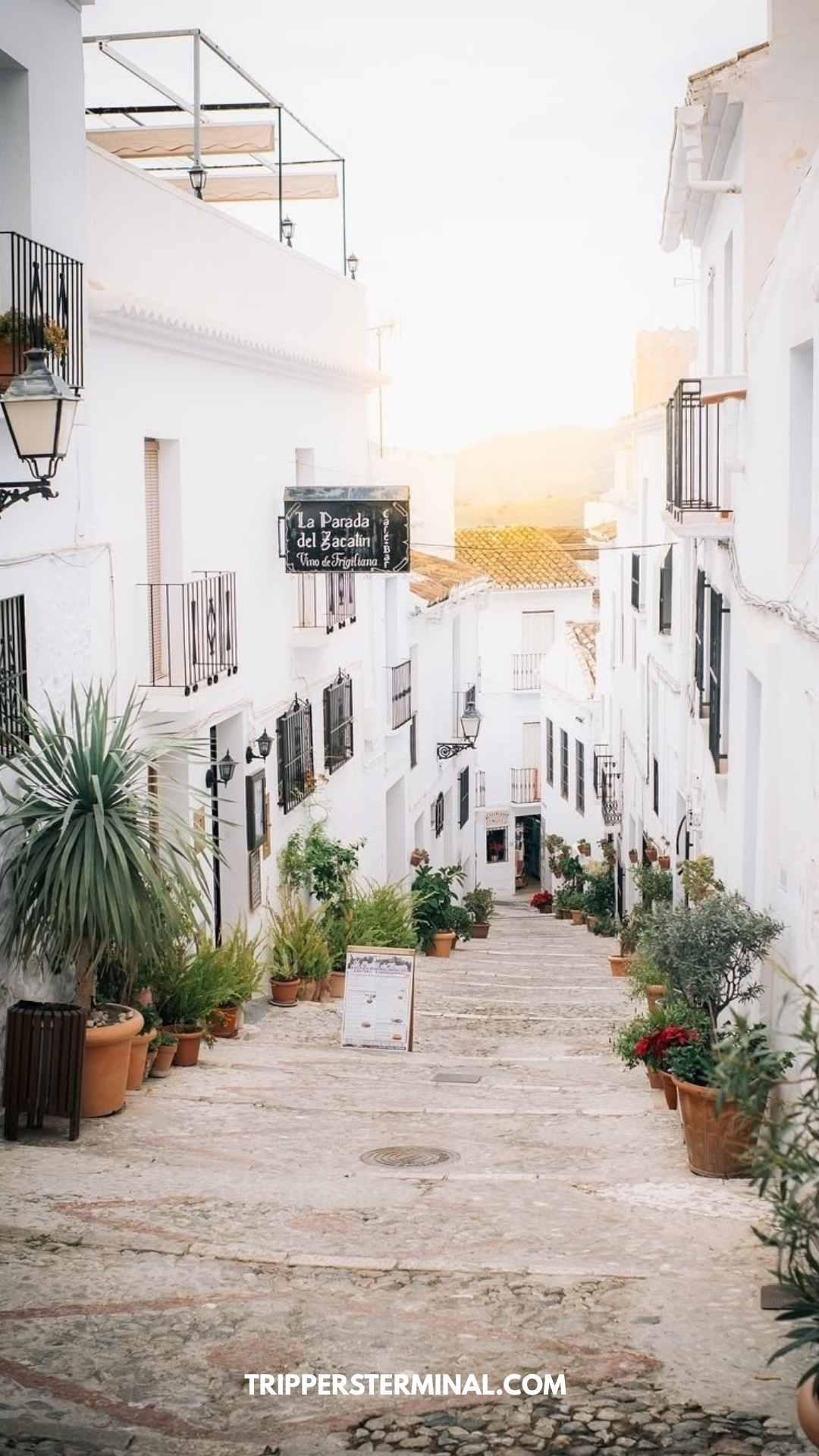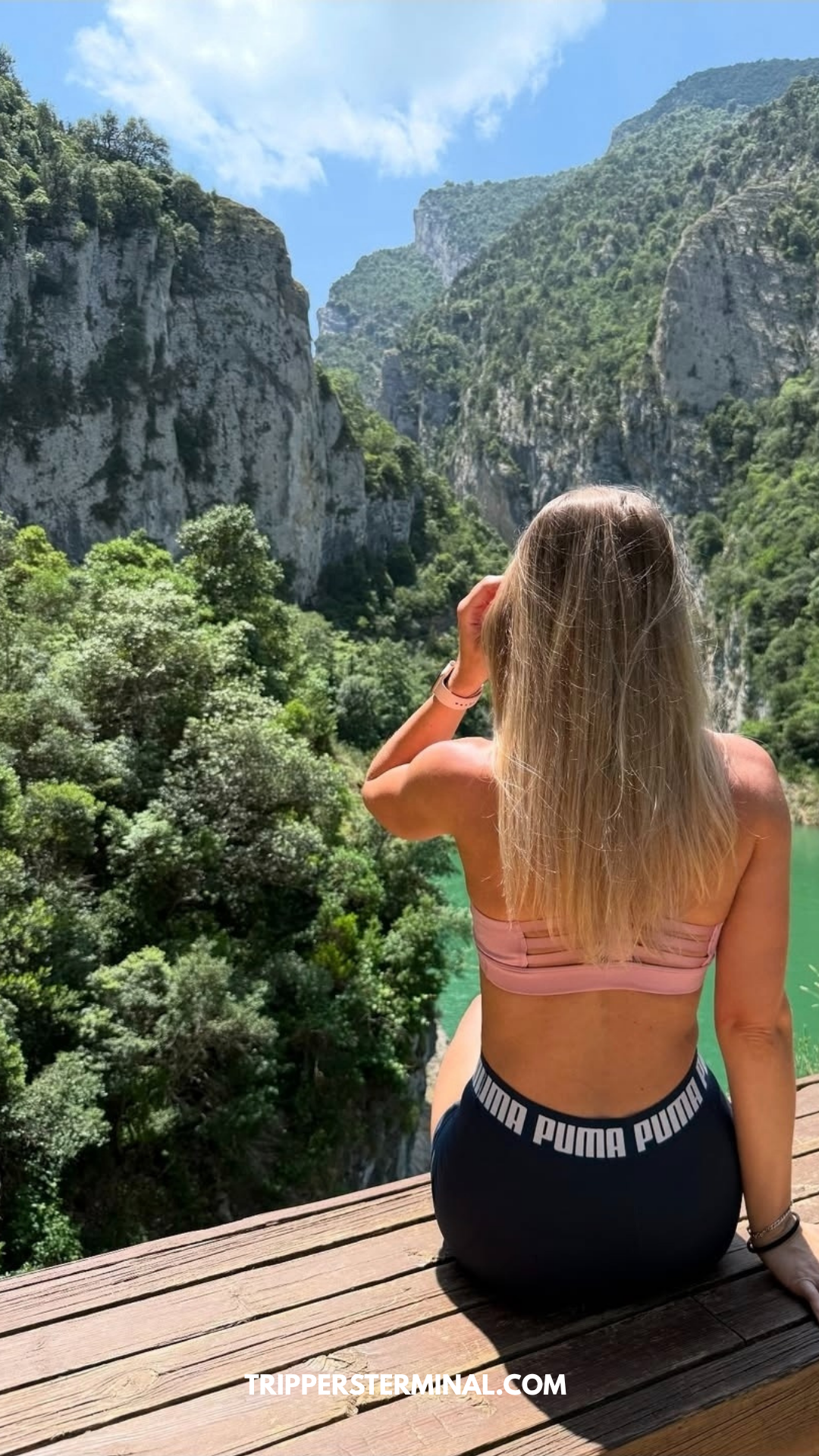5 Stunning Spanish Villages Most Tourists Skip (But Locals Love)
Most travelers to Spain stick to the classics… Barcelona, Seville, Madrid. But outside those busy hubs, there’s a quieter side of Spain that still feels personal, lived-in, and refreshingly crowd-free.
This post is a practical guide to five small villages that Spanish locals return to again and again, especially when they want a break from tourist-heavy spots. These aren’t places you’ll find on mainstream travel lists: they’re slower, more soulful, and full of local charm that hasn’t been polished for visitors.
Planning a solo reset? Or perhaps a calm countryside getaway? These towns offer something that’s getting harder to find: genuine atmosphere, thoughtful and amazing cuisine, and scenery that makes you want to stay a little longer. Here's exactly where to go — and how to make the most of your visit.
Cudillero, Asturias: A Real Port Town That Happens to Be Beautiful
If you’ve ever wished you could visit a fishing village before it got turned into a tourist attraction, Cudillero is probably what you’re imagining. It’s small, steep, and wildly scenic, but still very much a working town. No curated “village vibes” here - just narrow streets, colorful houses stacked along the cliffs, and locals actually living their lives.
From the top of the hill, the town looks like it’s tumbling into the sea. Red-tiled rooftops and weatherworn facades in soft blues and whites all seem to lean toward the harbor, as if they’ve been watching the waves for generations. And honestly, they probably have! This place is old, layered, and refreshingly unpolished.
Days start slowly. Locals sip cider at 11 a.m. (yes, really), poured with flair from high above the glass - it’s not for show, it’s tradition. At Casa Julio, the chalkboard menu depends on what came in with the boats that morning. You’ll probably see fabada Asturiana, grilled hake, or fresh anchovies still shimmering with sea salt.
There’s not a lot you have to do here, which is part of the charm. You can climb up to Mirador de la Garita-Atalaya for a ridiculously good view of the whole town, then meander down through cobbled backstreets toward the water. You’ll pass tiny homes with flowers spilling from window boxes, cafés you’d walk right past if not for the scent of garlic and olive oil, and maybe even an older man offering unsolicited directions to his cousin’s cider mill. (Follow them. They’re usually worth it.)
Don’t expect a beach club or fancy promenade. What you’ll find instead is real Atlantic air, sea spray, and a quiet harbor where you can sit for hours without being moved along. If the weather’s warm, people dip their toes in the rock pools or lay out on the old pier stones like they’ve been doing it for decades.
If you're staying overnight (which you absolutely should) look for one of the smaller guesthouses in the upper part of town. La Casona de Pío is a solid pick: it’s quiet, family-run, and serves the kind of breakfast you want after a morning walk by the sea. Or check out Hotel Casa Prendes if you want to stay closer to the port and wake up to the sound of fishing boats.
Getting here is easiest with a car. Fly into Oviedo or Santander, pick up a rental, and drive west along the N-632. The route itself is beautiful and gives you the freedom to stop off at other sleepy coastal towns like Luarca or Lastres. There’s a train station nearby in Villademar, but unless you’re traveling super light and flexible, a car gives you the space to explore properly.
Locals will tell you the best time to visit is late September - the light is soft, the weather still holds, and most visitors have gone home. That’s when the village feels like itself again. And if you’re a cheese person, don’t leave without trying Cabrales - a pungent blue cheese aged in mountain caves, usually served with honey or walnuts. It’s intense but unforgettable.
If you’re someone who craves real scenery, real food, and a bit of breathing space… you’re gonna love this place.
Molina de Aragón, Castilla-La Mancha: Quiet Hills, a Massive Castle, and Zero Rush
If you ever find yourself needing space (actual physical space, big skies, and a town that gives you permission to slow down), Molina de Aragón is the kind of place that meets you there.
Most people haven’t heard of it. And even when you arrive, you might wonder if you’re in the right place. The town is quiet. No buzz, no boutique hotels, no “must-see” anything. Just a stretch of historic streets, open air, and one of the largest medieval castles in all of Spain sitting calmly on the hill like it’s watching everything unfold.
It’s not a place you visit for the attractions. It’s a place you visit because you’re tired of attractions.
The castle (Castillo de Molina de Aragón) is seriously impressive. It's one of those rare historic sites that hasn’t been over-edited. You can walk the old ramparts, climb uneven stone steps, and look out over the landscape with no noise in your ears except wind and maybe a few birds. And that’s the thing here: silence is part of the experience.
The town itself is made for wandering. Cobbled streets weave past faded facades and quiet plazas. Grab a coffee at a bar where the owner greets regulars by name. There’s a small weekly market, a few cozy taverns, and almost always someone ready to tell you a bit about the local history - even if you didn’t ask.
If you’re someone who likes nature but doesn’t always want to hike in a crowd, you’ll love what’s just outside town. Alto Tajo Natural Park is nearby and surprisingly untouched. It’s full of cliffs, turquoise rivers, and trails that feel wildly remote. You can drive there in under 30 minutes and easily spend the whole day walking, picnicking, or just sitting somewhere green and quiet.
Getting here is part of the charm. From Madrid, it’s a 2.5-hour drive northeast through wide open country. Once you’re out of the city, the road opens up and the landscape shifts - more hills, less noise. You’ll want a car so you’re not limited to just the town. Having your own wheels means you can take it all in slowly, stopping at roadside cafés and little hamlets along the way.
There are no big hotels here, but that’s not the point. Look for family-run guesthouses like Casa Rural Los Gancheros or Hotel Palacio de los Molina, both small, welcoming, and tucked into the town’s old core. You won’t find spa menus, but you will find local honey at breakfast and hosts who actually care how you slept.
When to go? Spring is perfect. April and May give you wildflowers and clear skies, while early autumn means cooler temps and that lovely end-of-summer calm. Winters are cold, but if you don’t mind crisp air and early nights, it’s actually beautiful when the castle is dusted in snow.
Ask a local where to get the best migas (a traditional bread-crumb dish often served with chorizo or grapes). Everyone has a different opinion—and they’ll happily share it with you.
Peratallada, Catalonia: Stone Walls, Quiet Afternoons, and Catalan Charm
There are towns in Spain that seem designed for postcards, and then there’s Peratallada - a place that doesn’t feel designed at all. This tiny medieval village in Catalonia’s Baix Empordà region feels like time forgot about it, and somehow, that’s made it even more appealing.
Walk through the old stone gate and you’ll notice how soft the sound gets. No traffic. No rush. Just the occasional footsteps on cobblestones and the clink of cutlery from a shaded restaurant terrace. The whole village is built from sandstone, giving it a warm, honey-colored glow in the late afternoon. It’s not “staged” - it’s just been well cared for over centuries.
This is one of those places where doing nothing becomes the plan. Stroll through the arched streets, pop into tiny artisan shops hidden behind wooden doors, and ask about the town’s handmade ceramics - some of the most beautiful Catalan tableware can be found here, but it’s rarely exported. If you find something you love, buy it. It probably won’t show up in shops elsewhere! Or spend the afternoon with a glass of local Empordà wine and a plate of pan con tomate at El Borinot or Can Nau. You’ll find a handful of restaurants here: all independent, all charming, and most with leafy courtyards where you can linger for hours.
If you love history but hate the crowds that usually come with it, this is your kind of place. Peratallada’s castle is partially private, but you can walk right up to it, take in the structure, and feel its presence without dodging tour groups. The streets themselves are the real highlight, with stone archways, vine-covered balconies, and corners that feel completely untouched by time.
For a small town, it’s surprisingly atmospheric in the evenings. Low lighting, the smell of grilled vegetables from someone’s open kitchen window, and that slow Catalan pace that makes you rethink what a holiday should feel like.
Getting here is easy if you have a car - and you should. From Girona, it’s about 45 minutes through olive groves, farmland, and sleepy roads. Public transport is limited, and part of the appeal is being able to explore the surrounding countryside at your own pace. Towns like Pals, Palau-Sator, and Begur are all within a short drive.
Where to stay? There are a few rustic boutique options right inside the village, like El Cau del Papibou: quiet, stone-walled, and ideal for couples or solo travelers who just want peace and a slow rhythm. Or opt for a farmhouse stay nearby, especially if you’re planning a longer reset.
Best time to visit? Late spring or early autumn. July and August are busier, especially with day-trippers, but mid-May and late September give you warm days, fewer people, and that golden Mediterranean light without the heatwave energy.
Frigiliana, Andalusia: Whitewashed Walls, Moorish Alleys, and Olive Oil for Days
If you’re craving somewhere calm with a bit of sun on your face, Frigiliana is the kind of town that quietly delivers. Tucked into the hills above Nerja on Spain’s southern coast, this Andalusian village is a mix of whitewashed houses, steep stairways, and tiny tile mosaics that tell stories if you slow down enough to notice them.
At first glance, Frigiliana looks like other “pueblos blancos” - but the vibe is different. It’s got just enough going on to keep you curious, but not so much that you feel like you're checking things off a list. This is where you come to walk, eat, and breathe in the quiet mountain air with olive trees all around you.
The old Moorish quarter, Barribarto, is the heart of it. You’ll spend half your time here walking up narrow stone alleys that twist like they were designed before maps existed - because they were. The other half you’ll probably spend sitting with a drink, wondering why you didn’t come here sooner. Stop for a local vino dulce or fresh orange juice at La Tienda (a favorite terrace with views), then just let the afternoon unravel.
One of the low-key best things about Frigiliana? The food. It’s hyper-local. Restaurants like El Mirador or La Taberna del Sacristán serve dishes made with produce grown right outside town. If you see berenjenas con miel (crispy fried aubergine with molasses), order it. Same with the local goat cheese, the olive oil, and the almond-based desserts that somehow taste homemade even in restaurants.
Frigiliana also has an unexpected creative pulse, with artisan workshops, ceramic studios, and a few independent galleries tucked into old homes. It’s subtle, not touristy, and most of it is run by locals who live here year-round.
Getting here: From Málaga, it’s just under an hour by car - the drive winds through hills and fields, then climbs as you near town. If you don’t drive, you can take a bus to Nerja and then a short local bus or taxi up to Frigiliana. But a car gives you the chance to explore nearby villages like Competa or Torrox, which are equally quiet and full of character.
When to go: Spring and autumn are ideal. April–May and late September–October offer sunshine without the summer crowds. August brings the Festival de las Tres Culturas, which celebrates the town’s Christian, Jewish, and Muslim heritage. It’s beautiful, but busier, so plan ahead if you're visiting then.
Where to stay: You’ll find charming guesthouses like Casa Rural Miller’s or Hospedería el Caravansar, both nestled inside the old town with lovely balconies and rooftops. Or go just outside town and stay in a finca with mountain views and space to truly unwind.
Frigiliana is for travelers who care more about quiet beauty than bold landmarks, it hits the mark in all the right ways.
You can buy cold-pressed local olive oil from family-run shops in the village - often in reusable glass bottles. It’s a simple souvenir, but one you’ll use long after the trip ends.
Aínsa, Aragón: Medieval Stone, Mountain Silence, and a View You’ll Want to Keep to Yourself
There’s something about Aínsa that catches you off guard - in the best way. It’s tucked between the Pyrenees and the foothills of Huesca, a spot you might only end up in if you’re the kind of traveler who scans Google Maps for green spaces and small names. And yet, it’s one of the best-preserved medieval towns in Spain - and somehow still under the radar for most people.
You arrive through winding mountain roads and suddenly land in a village that looks like it hasn’t changed much in 800 years. But instead of feeling staged or overly polished, Aínsa just feels real. Quiet stone streets. A fortress on the hill. A town square that locals still use like a living room: kids kicking a football, older couples sharing a bench, and travelers quietly blending in over vino tinto and queso curado.
Start in the Plaza Mayor, where the town’s rhythm really lives. It’s wide and open, lined with arcades and small cafés where you can sit under the shade and watch time pass. The church of Santa María and the remains of the Aínsa Castle are right here too - but what really makes it special is the setting. Every view has a backdrop of the Pyrenees. Not the touristy ski-side ones — the wild, quiet, jagged ones that feel like you should have earned them with a four-hour hike.
And if you’re into hiking or simply long, peaceful walks, you’ll want to stay longer than planned. Aínsa is surrounded by natural parks like Ordesa y Monte Perdido: one of the most stunning (and least crowded) national parks in Europe. You’ll find alpine lakes, dramatic cliffs, wildflowers, and trails where it’s possible to walk for hours and barely see another person.
You don’t have to be a hardcore adventurer to enjoy it, though. There are shorter routes near town, scenic drives, and little detours to villages like Boltaña and Tella: both quiet, character-filled, and perfect for a lazy afternoon loop with good snacks along the way.
Don’t skip the small independent artisan shops - I recommend you to look for local honey and cheese at the Saturday morning market: many producers live nearby and only sell in person. It’s also a good way to strike up a slow conversation with someone who’s lived here their whole life. It’s a very friendly vibe here.
Getting here: From Zaragoza, it’s about a 2.5-hour drive north. The roads get prettier the closer you get. You’ll definitely want your own car - not just for convenience, but because part of the experience here is in the driving itself. It’s open and slow and full of little places to pull over just because the view asks for it.
Where to stay: For something right in the old town, try Hotel Los Siete Reyes: it’s cozy, locally run, and you’ll have that rare feeling of staying inside the village walls. If you’d rather wake up to fields and birdsong, go for one of the countryside casas rurales nearby. Many are surprisingly affordable and offer views that would cost double elsewhere.
When to visit: Late spring (May–June) and early autumn (September) are ideal. The weather is perfect for walking, the forests are green, and the village feels quiet but not deserted. Winter is beautiful too, especially if you like the idea of crisp air and empty trails - just bring layers.
Spain's Quiet Corners Are Still Out There
If you’ve ever googled “beautiful towns in Spain that aren’t crowded” or “where locals go to escape the tourists,” this guide was made for you. Because those places still exist - they’re just not on the usual itineraries. They’re tucked into mountains, clinging to cliffs, or hidden behind a row of olive trees, quietly doing their thing while the rest of the world rushes by.
What all these villages (Cudillero, Anento, Peratallada, Frigiliana, and Aínsa) have in common isn’t just beauty. It’s pace and presence. It’s that rare mix of authenticity and calm that makes you relax the second you arrive. And while they might not come with big-name landmarks or flashy “things to do,” they offer something a lot more lasting: real atmosphere, thoughtful food, and space to slow down.
So if you’re planning a trip to Spain in 2025 and want more than just the usual big-city checklist, bookmark this. These towns aren’t going anywhere. And when you're ready to trade packed plazas for quiet streets and tourist menus for local sidra, you’ll know exactly where to go.
And if you want even more ideas for cozy escapes and mindful travel in Europe, don’t miss our other slow travel guides, hand-picked for travelers who crave calm, character, and connection over crowds.
Want more places like these? Sign up for our newsletter.
If you're craving even more low-key towns where history still feels close, you might like:
Peaceful Villages in the Loire Valley — castle views without the tour buses
Wellness escapes in Auvergne and Limousin — for days that revolve around nature, food, and feeling human again
Vineyard hiking routes in Europe — soft hills, slow mornings, and lots of wine along the way
FAQ - Planning a trip around Spain
What are the quietest villages in Spain to visit in 2025?
Cudillero, Frigiliana, Aínsa, Molina de Aragón, and Peratallada are all peaceful, crowd-free destinations perfect for travelers who want a slower, more local experience.
What towns in Spain are beautiful but not touristy?
Peratallada and Aínsa are stunning and fly well under the tourist radar. They offer medieval architecture, local food, and relaxed, small-town charm.
Where do locals go on holiday in Spain?
Many Spaniards escape to quiet inland villages like Molina de Aragón or hidden coastal gems like Cudillero, where they can enjoy nature, food, and peace without the crowds.
Is it worth visiting Spanish villages without a car?
Some villages (like Frigiliana) are reachable by bus, but renting a car gives you flexibility and access to the best off-the-path places.
What’s the best time to visit these villages?
Late spring (May–June) and early autumn (September–October) offer great weather and fewer tourists.


